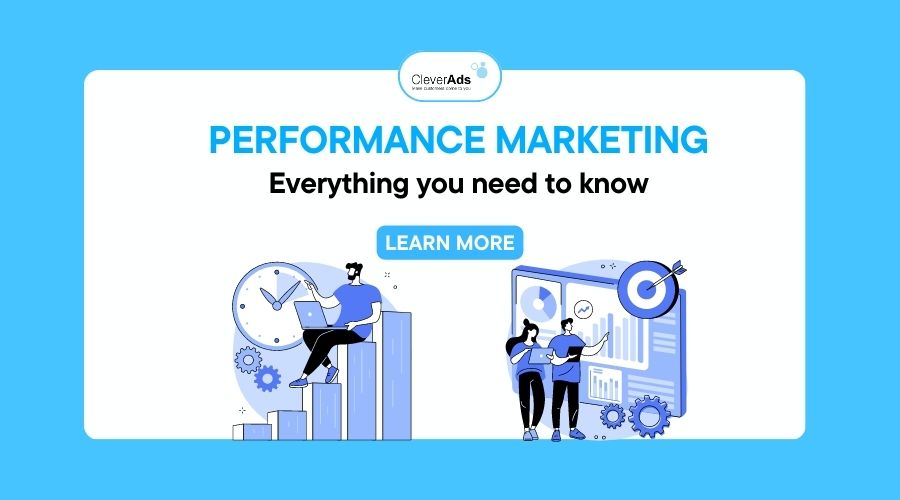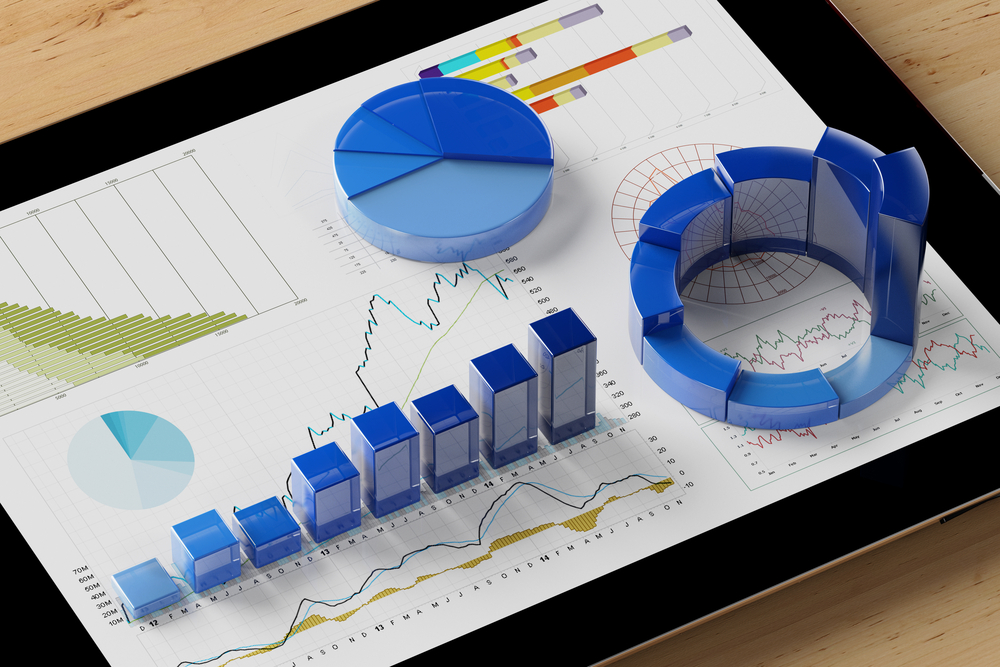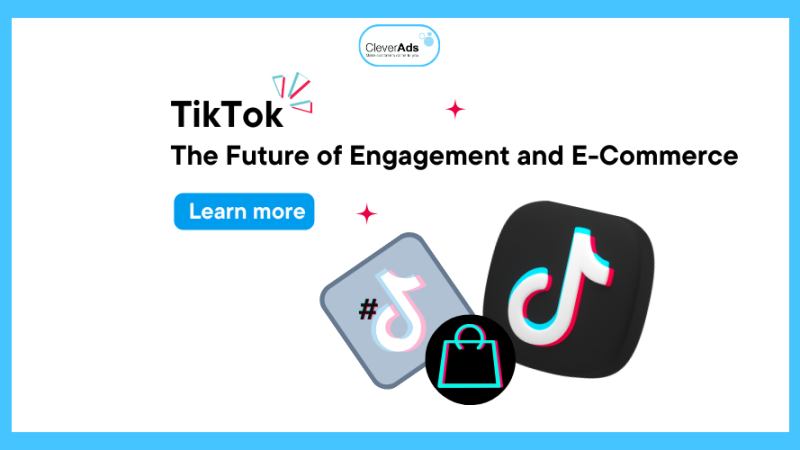What is Performance Marketing? Everything you need to know

What is Performance? Performance Marketing has completely changed how businesses advertise. To better understand Performance Marketing, let’s find out with CleverAds!
1. What is Performance?
Performance means efficiency, which assesses the ability or result of a particular thing or action. And evaluate based explicitly on precise data. Performance is used in many fields, especially in the Marketing industry.
2. What is Performance Marketing?
Performance Marketing is a part of Digital Marketing, to mean performance-based marketing. The performance here is a specific target result when performing actions, including lead generation (lead customers), sales, and clicks. The business will pay the publisher when there is a specific result.
Unlike traditional and organic marketing, Performance Marketing is used as a specific way to drive action and track and measure those actions, all while allocating the ROI of each asset. , campaign, or activity.

3. Benefits of Performance Marketing?
Native advertising is a perfect example of performance marketing. Native advertising is a form of advertising that “blends” into the content that readers want to find on some websites for scale-based remarketing, where content and information are presented to customers, thereby targeting based on the interest and intent of the guest.
Example: Compare native ads with TV ads, TV ads are run for a certain period and frequency, but there is no guarantee as to how many consumers will see or react to the ad. The Performance of native ads, on the other hand, is precise, based on impressions or clicks to see a post.
This focuses on the benefits of Performance in general and Performance Marketing in particular.
Here are the top 3 reasons why Performance Marketing is the new form of marketing:
- Performance is easy to track: The specific purpose of setting up Performance Marketing campaigns is to track and measure. With the help of various data analysis tools specially designed for performance marketers, it will be much easier to get the pacing and adjust this campaign to get good results.
- Low Risk: Marketers know exactly what’s happening with their Performance Marketing campaigns at every stage. From there, they can take measures to optimize and reduce risk whenever necessary. Moreover, with less risk comes a faster campaign launch time than possible, no longer driving approvals.
- Focus on ROI: Performance Marketing is guided by ROI, so the focus is always on the ultimate goal – improving performance. As such, Performance Marketing campaigns are guaranteed to lead to better results, helping to enhance the brand on all metrics, increase the number of potential customers, and increase sales.
4. How does Performance Marketing work?
Performance Marketing works based on the participation of 4 target groups. Each group plays its role in leading to the result.
4.1. Retailers and Sellers
In Performance Marketing, the target group of Retailers and Sellers are also known as Advertisers. They are direct units that want to promote their products and services through Affiliate Partners or Publishers.
For example, Business units that have been successful using Performance Marketing can include industries such as food, fashion, F&B, etc.
They use the retail system or influencers to influence customers, build their confidence to buy, and even become loyal customers. Moreover, today’s consumer buying behavior trends often trust recommendations and recommendations from influencers and other users, especially during their purchase research phase.
4.2. Affiliates and Publishers
This target group is considered a “marketing partner” in Performance Marketing. They receive promotion of products, services, or brands from businesses to receive ” commissions.”
Affiliates and Publishers exist in many forms: websites, blogs, and social networks. Parallel to that, this target group also uses many different campaigns, such as: running display ads on banners or advertising blogs when customers visit. Search Engine Marketing (SEM). All towards the goal of promotion, depending on the particular audience and the specific purpose, there will be a straightforward form and campaign.
4.3. Affiliate Networks and Third-Party Tracking Platforms
This target group acts as an ” exchange,” helping to connect businesses with affiliate partners. Networks and Platforms perform specific tasks such as:
- Provide tools such as banners, text links, etc.
- Track and manage leads, clicks, and conversions.
- Payment intermediary
- Settlement of disputes between two parties
4.4. Affiliate Managers and OPMs (affiliate management companies)
Businesses needing more staff will hire a unit to provide marketing services or an agency. OPMs help companies build marketing campaigns, manage production, design campaigns, and implement regulations to ensure the highest effectiveness. In addition, agencies can use landing pages, search engine optimization (SEO), and marketing content to optimize campaigns.

5. Steps to Build a Performance Marketing Campaign
There are many different types of Performance Marketing channels and campaigns. However, the following vital steps should be followed when creating a Performance Marketing campaign for any audience.
Step 1: Set up and define campaign goals
Before starting a campaign, it’s crucial to establish campaign goals. Therefore, when building a Performance Marketing campaign, setting goals is essential. In addition, many advertising platforms require goal setting before creating an ad or setting up a campaign.
The goal is to determine where your ad shows, its target audience, and other essential factors. Then, if you’ve established campaign goals, the ad platform can create campaigns targeting those goals.
Common Performance Marketing Goals:
- Increase brand awareness
- Increase website traffic
- Remarketing or retargeting
- Generate leads
- Boost sales
Step 2: Select a channel
In Performance Marketing, it is advisable to diversify the channels used instead of focusing on only one channel. This helps increase your campaign’scampaign’s visibility and reach, expanding your chances of success. Therefore, it is essential to find channels that specialize in the type of conversion and where you are most likely to find your target audience.
The main channels used in Performance Marketing:
Example: Use diversification of social networks or expand from display ads to native ads. This will significantly increase your potential reach and expose your performing campaigns to a broader audience.
Step 3: Create and run a campaign
Performance Marketing’s primary job is to create campaigns – to identify target audiences and understand their pain points and desires. Also, create advertisements and messages to address their needs and capture their attention.
The better you understand your target audience and how your product or service can appeal to them, the easier it will be to create the most compelling images and headlines, design, and schedule ads. And, of course, the technical aspects of the campaign, such as ad sizes, copy character limits, and accepted images, also depend on the specific platform or channel being used.
Step 4: Measure and optimize campaigns
All Performance Marketing campaigns start generating data as soon as they’re up and running. Then, marketers can optimize individual campaigns for performance across the channels in use. Track analytics and metrics to determine which traffic sources perform best, then allocate ad funds accordingly. Use Performance Marketing campaigns to increase sales and identify the best channels, audiences, and campaign objectives to increase your return on investment.
Campaign performance metrics include:
- ROI – Return on Investment
- CPW – Cost per order
- CPL – Cost per lead
- Conversion Rate – Conversion rate
- Incremental Sales – Increasing sales volume
- Customer Lifetime Value – Lifetime customer value
Step 5: Handle potential risks
Implementing a Performance Marketing campaign takes much work to avoid challenges and risks. Some risks may be encountered when implementing this campaign:
- Brand safety
- Privacy Policy
- Click fraud and bot traffic
- Publisher fraud and location transparency.
One way to minimize potential problems in the first place is to focus resources on high-quality websites and advertising platforms. That’s where issues like brand safety and data privacy are handled responsibly and reliably.
6. Examples of Performance Marketing
6.1. Outbrain – Search Campaign
According to Moz Research, the Outbrain platform is the way to generate greater pageviews per user and lower bounce rates. The growth marketing team at Outbrain uses a range of performance tactics to drive awareness and lead generation for the Outbrain recommendation platform. For example, the group recently launched a brand search campaign in Italy, highlighting paid ads shown to users searching for “Outbrain” online, leading to a sales landing page. This campaign performance is impressive: 18.47% CTR, 13.39% CVR, and 2028% ROI. This means that for every $1 spent on a search campaign, there is a return of $20.
6.2. VAVAVOOM – YouTube Video Campaign
Global fashion retailer VAVAVOOM chooses We Influence as its Digital Marketing partner, and TrueView undertakes the Performance Marketing campaign. TrueView for Action is a video campaign on Google Ads that aims to increase conversions and leads through features that drive action. VAVAVOOM has received some awe-inspiring results from its YouTube video campaign. Specifically, they achieved 304,517 interactions during the 11-week campaign and a ROAS of 1409%.
7. Conclusion
Above is the basic definition of Performance, all the knowledge you need, and specific examples of Performance and performance Marketing. CleverAds hopes this sharing can help you better understand and have a better overview of these terms. From there, build an effective Performance Marketing campaign, bringing significant benefits to your business. Good luck!


